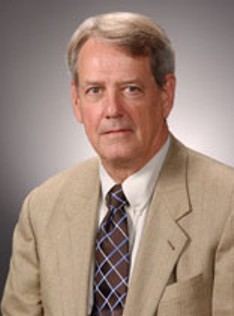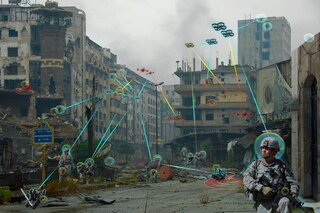Overview
The complete name of the alliance that ran from 2006–2016 was United States/United Kingdom International Technology Alliance in Network and Information Sciences. It was a research group tasked with conducting fundamental research in network science and information science which affected coalition operations.
The program was a combination of country-specific research programs that were run by ARL and MoD respectively. The ARL ran several programs called Collaborative Technology Alliances (CTAs) and the MoD ran equivalent programs, each of which were collaborative research programs involving multiple research institutes and universities. The CTAs programs were run for the duration of 3–5 years, and usually involved a consortium of industrial research laboratories and universities to team together to solve research problems in a specific domain.
The International Technology Alliance differed from the CTAs primarily in the fact that its scope was international, and spanned two countries, the United States and the United Kingdom. Thus, the alliance consisted of researchers from ARL and MoD working together with several UK and US based industries and universities to solve several fundamental research problems.
The work done by ITA was fundamental research in nature, and the goal was to perform public domain research by means of published papers. The restriction of research to fundamental research was done in order to avoid running into any issues related to ITAR which often arise in work focused on or sponsored by the armed forces of a country.
A unique aspect of ITA was its focus on solving scientific problems in the context of coalition operations. However, due to the nature of fundamental research, many results are applicable in situations which fall outside coalition operations, e.g. within networks of a single country military or for federation of commercial networked systems.
During the first five years of its existence, ITA was focused on research in four technical areas (i) network theory focusing on wireless and sensor networks (ii) security across systems of systems focusing on solving security issues that arise when two different networks need to inter-operate (iii) sensor information processing and delivery focusing on issues involving sensor network information management and (iv) distributed decision making and coalition planning focusing on how humans from different countries use the network to make informed decisions.
In the last five years of its existence, the four technical areas were consolidated and revised into two technical areas (v) Coalition Inter-operable Secure & Hybrid Networks and (vi) Distributed Coalition Information Processing for Decision Making. Hybrid networks were defined as mobile networks that also leverage infrastructure networks such as cellular and wired networks.

Computer science is the study of computation, automation, and information. Computer science spans theoretical disciplines to practical disciplines. Computer science is generally considered an academic discipline and distinct from computer programming which is considered to be a technical field.

The Defense Advanced Research Projects Agency (DARPA) is a research and development agency of the United States Department of Defense responsible for the development of emerging technologies for use by the military.

Ross John Anderson is a researcher, author, and industry consultant in security engineering. He is Professor of Security Engineering at the Department of Computer Science and Technology, University of Cambridge where he is part of the University's security group.

The École centrale de Lyon (ECL) is a research university in greater Lyon, France. Founded in 1857 by François Barthélemy Arlès-Dufour in response to the increasing industrialization of France, it is one of the oldest graduate schools in France. The university is part of the Grandes Écoles, a prestigious group of French institutions dedicated to engineering, scientific research, and business education. The current 45-acre campus opened in 1967 and is located in the city of Ecully.

James Sacra Albus was an American engineer, Senior NIST Fellow and founder and former chief of the Intelligent Systems Division of the Manufacturing Engineering Laboratory at the National Institute of Standards and Technology (NIST).
Bio-inspired computing, short for biologically inspired computing, is a field of study which seeks to solve computer science problems using models of biology. It relates to connectionism, social behavior, and emergence. Within computer science, bio-inspired computing relates to artificial intelligence and machine learning. Bio-inspired computing is a major subset of natural computation.

The U.S. Army Combat Capabilities Development Command Army Research Laboratory is the U.S. Army's foundational research laboratory. ARL is headquartered at the Adelphi Laboratory Center (ALC) in Adelphi, Maryland. Its largest single site is at Aberdeen Proving Ground, Maryland. Other major ARL locations include Research Triangle Park, North Carolina, White Sands Missile Range, New Mexico, Graces Quarters, Maryland, and NASA's Glenn Research Center, Ohio and Langley Research Center, Virginia. ARL also has regional sites in Playa Vista, California, Chicago, Austin, TX, and Boston.
The School of Engineering and Applied Science (SEAS) at the George Washington University in Washington, D.C. is a technical school which specializes in engineering, technology, communications, and transportation. The school is located on the main campus of the George Washington University and offers both undergraduate and graduate programs.
The International Technology Alliance (ITA) refers to a series of research programs that were jointly sponsored by UK Ministry of Defence and the US Army Research Laboratory (ARL). One such program focusing on network sciences NIS-ITA ran from 2006 to 2016. The other program focusing on distributed analytics DAIS-ITA was initiated in 2016.
Bolesław Karol Szymański is the Claire and Roland Schmitt Distinguished Professor at the Department of Computer Science and the Founding Head of the Center for Network Science and Technology, Rensselaer Polytechnic Institute. He's known for multiple contributions into computer science, including Szymański's algorithm.
Informatics is the study of computational systems. According to the ACM Europe Council and Informatics Europe, informatics is synonymous with computer science and computing as a profession, in which the central notion is transformation of information. In other countries, the term "informatics" is used with a different meaning in the context of library science, in which case it is synonymous with data storage and retrieval.
The Network Science Collaborative Technology Alliance (NS CTA) is a collaborative research alliance funded by the US Army Research Laboratory (ARL) and focused on fundamental research on the critical scientific and technical challenges that emerge from the close interdependence of several genres of networks such as social/cognitive, information, and communications networks. The primary goal of the NS CTA is to deeply understand the underlying commonalities among these intertwined networks, and, by understanding, improve our ability to analyze, predict, design, and influence complex systems interweaving many kinds of networks.
Newton Howard is a brain and cognitive scientist, the former director of the MIT Mind Machine Project at the Massachusetts Institute of Technology (MIT). He is a professor of computational neurology and functional neurosurgery at Georgetown University. He was a professor of at the University of Oxford, where he directed the Oxford Computational Neuroscience Laboratory. He is also the director of MIT's Synthetic Intelligence Lab, the founder of the Center for Advanced Defense Studies and the chairman of the Brain Sciences Foundation. Professor Howard is also a senior fellow at the John Radcliffe Hospital at Oxford, a senior scientist at INSERM in Paris and a P.A.H. at the CHU Hospital in Martinique.
The International Technology Alliance in Distributed Analytics and Information Sciences (DAIS-ITA) was a research program initiated by the UK Ministry of Defence (MOD) and the US Army Research Laboratory (ARL), in September 2016 and remained active for 5 years until September 2021. It was led by IBM Research in the U.S. and IBM Hursley in the UK. DAIS ITA is the second International Technology Alliance started by the two countries, succeeding the previous ten year alliance NIS-ITA, which was of similar nature.
The Cognition and Neuroergonomics (CaN) Collaborative Technology Alliance was a research program initiated, sponsored and partly performed by the U.S. Army Research Laboratory. The objective of the program was to “conduct research and development leading to the demonstration of fundamental translational principles of the application of neuroscience-based research and theory to complex operational settings. These principles will guide the development of technologies that work in harmony with the capabilities and limitations of the human nervous system.”
Cyber Security Collaborative Research Alliance (CSCRA) was a research program initiated and sponsored by the US Army Research Laboratory (ARL). The objective of the program was “to develop a fundamental understanding of cyber phenomena, including aspects of human attackers, cyber defenders, and end users, so that fundamental laws, theories, and theoretically grounded and empirically validated models can be applied to a broad range of Army domains, applications, and environments.”
The Robotics Collaborative Technology Alliance (R-CTA) was a research program initiated and sponsored by the US Army Research Laboratory. The purpose was to “bring together government, industrial, and academic institutions to address research and development required to enable the deployment of future military unmanned ground vehicle systems ranging in size from man-portables to ground combat vehicles.” Collaborative Technology and Research Alliances was a term for partnerships between Army laboratories and centers, private industry and academia for performing research and technology development intended to benefit the US Army. The partnerships were funded by the US Army.
The Internet of Military Things (IoMT) is a class of Internet of things for combat operations and warfare. It is a complex network of interconnected entities, or "things", in the military domain that continually communicate with each other to coordinate, learn, and interact with the physical environment to accomplish a broad range of activities in a more efficient and informed manner. The concept of IoMT is largely driven by the idea that future military battles will be dominated by machine intelligence and cyber warfare and will likely take place in urban environments. By creating a miniature ecosystem of smart technology capable of distilling sensory information and autonomously governing multiple tasks at once, the IoMT is conceptually designed to offload much of the physical and mental burden that warfighters encounter in a combat setting.

The Internet of Battlefield Things Collaborative Research Alliance (IoBT-CRA), also known as the Internet of Battlefield Things Research on Evolving Intelligent Goal-driven Networks, is a collaborative research alliance between government, industry, and university researchers for the purposes of developing a fundamental understanding of a dynamic, goal-driven Internet of Military Things (IoMT) known as the Internet of Battlefield Things (IoBT). It was first established by the U.S. Army Research Laboratory (ARL) to investigate the use of machine intelligence and smart technology on the battlefield, as well as strengthen the collaboration between autonomous agents and human soldiers in combat. An initial grant of $25 million was provided by ARL in October 2017 to fund the first five years of this potential 10-year research program.
Dinesh Verma is an Indian-born American computer scientist. He is an IBM Fellow working at IBM Thomas J Watson Research Center, Yorktown Heights, NY where he conducts research on technologies at the intersection of the Internet of Things, Artificial Intelligence and Distributed Systems. He concurrently serves as the Technical Committee Chair/Chief Technology Officer of Enterprise Neurosystems Group, an open-source consortium focused on distributed enterprise AI.







